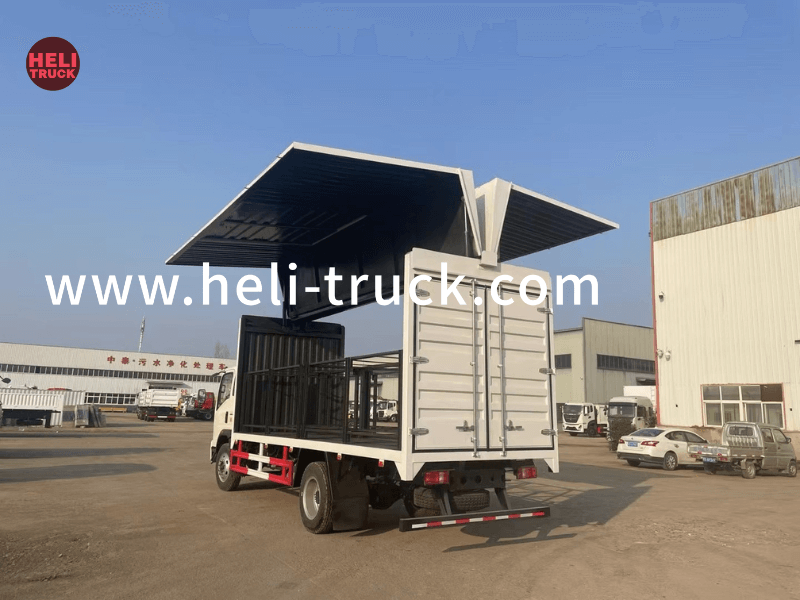Introduction
Waste management is a critical aspect of urban living, and garbage truck waste transportation plays a pivotal role in keeping our cities clean and hygienic. Garbage trucks are the backbone of waste collection systems, ensuring that waste is efficiently transported from homes, businesses, and public spaces to disposal sites. In this article, we will delve into the world of garbage truck waste transportation, exploring the different types of garbage trucks, their functions, challenges faced in waste transportation, and innovative solutions to enhance efficiency and sustainability.
Types of Garbage Trucks
Garbage trucks come in various shapes and sizes, each designed to cater to specific waste collection needs. The most common types of garbage trucks include rear loader trucks, front loader trucks, side loader trucks, and compactors. Rear loader trucks are equipped with a hydraulic lifting mechanism at the back of the vehicle, allowing workers to empty bins into the truck's hopper. Front loader trucks, on the other hand, feature a hydraulic arm at the front of the vehicle, which is used to lift and empty large dumpsters into the truck. Side loader trucks have a mechanism on the side of the vehicle for lifting and emptying bins, making them ideal for narrow streets and alleyways. Compactor trucks compress waste to maximize capacity, reducing the number of trips required for waste transportation.
Functions of Garbage Trucks
Garbage trucks play a crucial role in the waste management process, from collecting waste at the source to transporting it to disposal sites. The primary functions of garbage trucks include waste collection, compaction, transportation, and disposal. Waste collection involves picking up waste from residential, commercial, and industrial areas using the appropriate type of garbage truck. Once collected, the waste is compacted to reduce volume and increase payload efficiency. The compacted waste is then transported to transfer stations, recycling facilities, or landfills for disposal. Garbage truck waste transportation is a complex and coordinated process that requires careful planning and execution to ensure the timely and efficient removal of waste.

Challenges in Waste Transportation
Despite the essential role they play, garbage trucks face several challenges in waste transportation. One of the primary challenges is traffic congestion, which can delay waste collection schedules and increase fuel consumption. Additionally, narrow streets, low-hanging obstacles, and parked vehicles can impede the movement of garbage trucks, making it difficult to access waste collection points. Weather conditions such as heavy rain, snow, or extreme heat can also affect waste transportation operations, posing risks to both workers and equipment. Another significant challenge is the increasing volume of waste generated by growing populations, putting pressure on existing waste management infrastructure and resources.
Innovative Solutions for Efficient Waste Transportation
To address the challenges faced in waste transportation, several innovative solutions have emerged to enhance efficiency and sustainability. One such solution is the use of route optimization software, which helps garbage truck operators plan the most efficient collection routes based on factors such as traffic patterns, waste volume, and proximity to disposal sites. Advanced sensor technology can be integrated into garbage trucks to monitor waste levels in bins in real-time, enabling route adjustments and optimizing collection schedules. The adoption of alternative fuels such as compressed natural gas (CNG) and electric powertrains can reduce emissions and operating costs, making garbage trucks more environmentally friendly.
Furthermore, the implementation of smart waste management systems, including IoT sensors, RFID tags, and data analytics, can provide valuable insights into waste generation patterns, allowing for predictive maintenance and improved resource allocation. Automated waste collection systems, such as underground vacuum tubes and pneumatic systems, are gaining popularity in urban areas, reducing the need for traditional garbage trucks and minimizing visual and olfactory impacts. These innovative solutions not only enhance the efficiency of waste transportation but also contribute to a cleaner and more sustainable urban environment.
Conclusion
Garbage truck waste transportation is a vital component of waste management systems, ensuring that waste is collected, transported, and disposed of in a safe and efficient manner. By understanding my review here of garbage trucks, their functions, challenges faced, and innovative solutions available, we can work towards improving waste transportation processes and promoting sustainability. As urban populations continue to grow, the demand for effective waste management solutions will only increase, making it imperative to invest in technology, infrastructure, and practices that support a cleaner and healthier environment for all.
